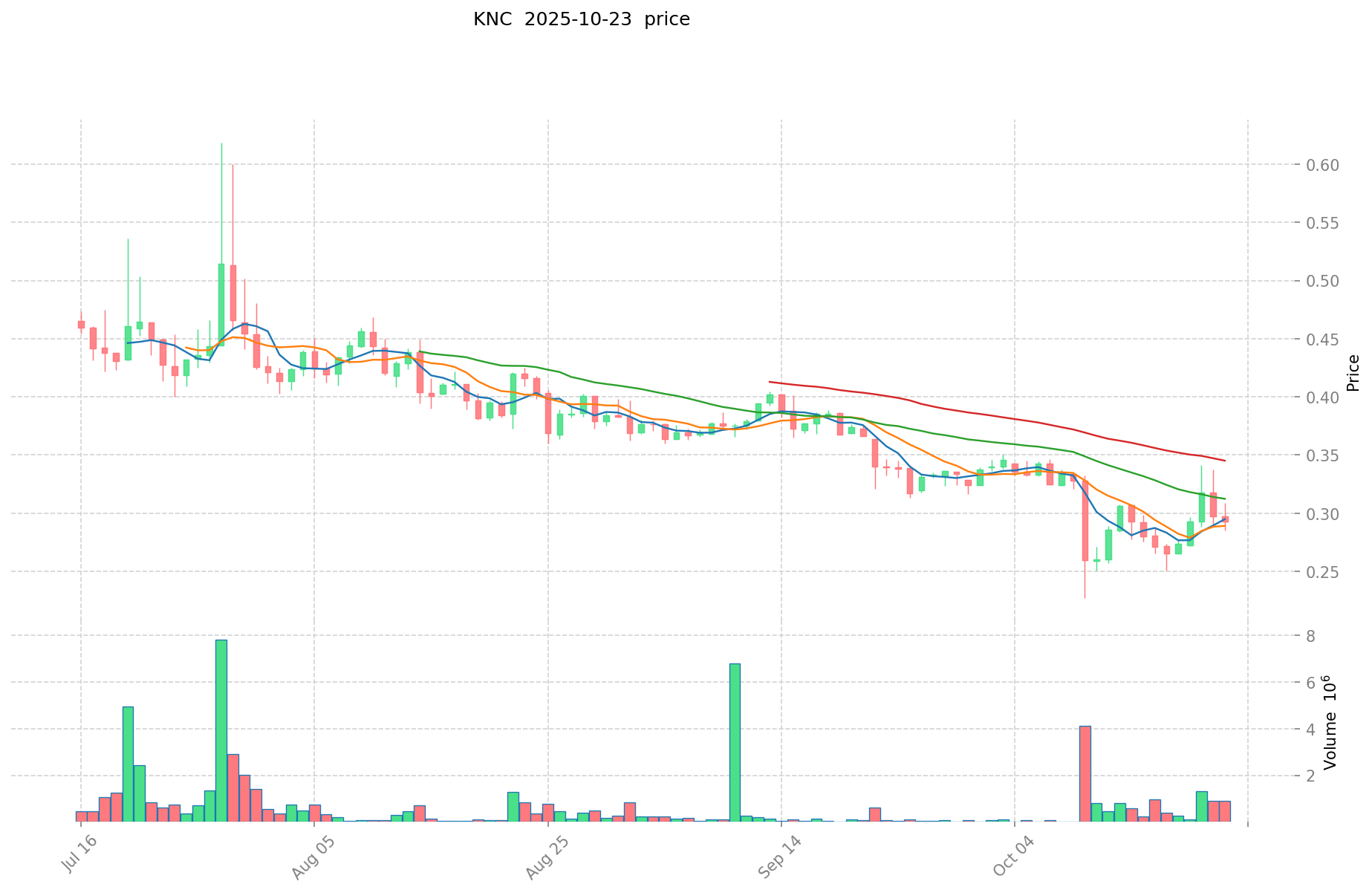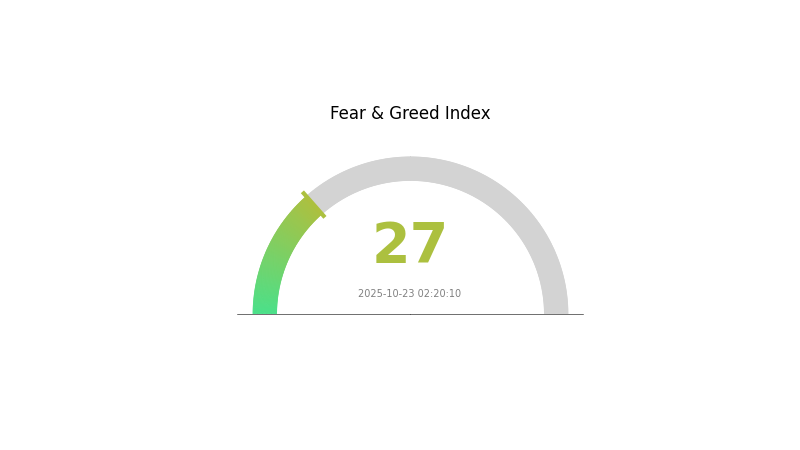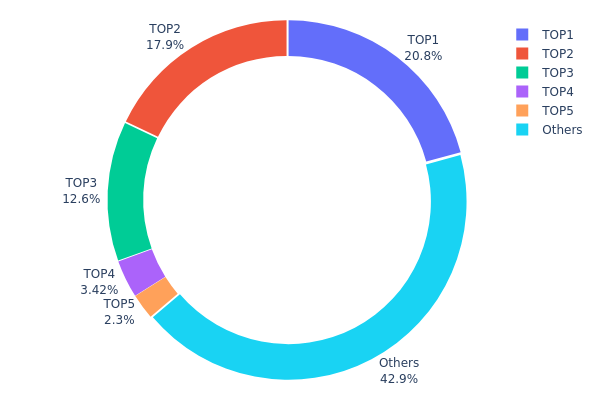2025 KNC Price Prediction: Kyber Network Crystal's Potential Surge in the DeFi Ecosystem
Introduction: KNC's Market Position and Investment Value
Kyber (KNC), as a decentralized trading platform for digital assets, has achieved significant milestones since its inception in 2017. As of 2025, Kyber's market capitalization has reached $51,573,329, with a circulating supply of approximately 170,152,851 tokens, and a price hovering around $0.3031. This asset, often referred to as a "liquidity enabler," is playing an increasingly crucial role in decentralized finance (DeFi) and token swaps.
This article will provide a comprehensive analysis of Kyber's price trends from 2025 to 2030, considering historical patterns, market supply and demand, ecosystem development, and macroeconomic factors to offer professional price predictions and practical investment strategies for investors.
I. KNC Price History Review and Current Market Status
KNC Historical Price Evolution
- 2017: KNC launched with ICO price of $0.5, price fluctuated in early trading
- 2020: DeFi summer boom, KNC reached new highs around $2
- 2022: Crypto market downturn, price dropped from ATH of $5.7 to under $1
KNC Current Market Situation
As of October 23, 2025, KNC is trading at $0.3031, with a market cap of $51.57 million ranking 598th. The 24-hour trading volume is $299,587, indicating moderate market activity. KNC has seen a 4.48% increase in the past 24 hours, suggesting short-term bullish momentum. However, longer-term trends show mixed performance, with a 9.11% gain over 7 days but a 9.93% decline over 30 days. The token is currently trading 94.68% below its all-time high of $5.7, reached on April 29, 2022. The circulating supply of 170,152,851 KNC represents 67.44% of the total supply, with a max supply cap of 252,301,550 tokens.
Click to view the current KNC market price

KNC Market Sentiment Indicator
2025-10-23 Fear and Greed Index: 27 (Fear)
Click to view the current Fear & Greed Index
The crypto market sentiment remains cautious as the Fear and Greed Index hovers at 27, indicating a state of fear. This suggests investors are exercising caution and potentially looking for buying opportunities. During such periods, it's crucial to conduct thorough research and consider dollar-cost averaging strategies. Remember, market cycles are natural, and periods of fear often precede recoveries. Stay informed and manage your risk wisely on Gate.com.

KNC Holdings Distribution
The address holdings distribution data for KNC reveals a relatively concentrated ownership structure. The top five addresses collectively control 57.03% of the total KNC supply, with the largest holder possessing 20.80% of all tokens. This concentration level suggests a significant influence of major stakeholders on the KNC ecosystem.
Such a distribution pattern may have implications for market dynamics. The presence of large holders could potentially lead to increased price volatility if they decide to make substantial moves. However, it's worth noting that 42.97% of KNC tokens are distributed among numerous smaller holders, which provides some degree of decentralization and may help mitigate risks associated with excessive concentration.
Overall, the current KNC holdings distribution indicates a moderate level of centralization. While this structure might raise concerns about potential market manipulation, it also suggests a stable core of long-term holders who may have a vested interest in the project's success. Monitoring changes in this distribution over time will be crucial for assessing the evolving market structure and decentralization efforts of the KNC ecosystem.
Click to view the current KNC Holdings Distribution

| Top | Address | Holding Qty | Holding (%) |
|---|---|---|---|
| 1 | 0xeadb...72b3bd | 50042.70K | 20.80% |
| 2 | 0x80d2...3320d6 | 43028.68K | 17.88% |
| 3 | 0xf977...41acec | 30404.49K | 12.63% |
| 4 | 0x282f...ad4a8e | 8237.52K | 3.42% |
| 5 | 0xb1aa...a96994 | 5540.84K | 2.30% |
| - | Others | 103300.29K | 42.97% |
II. Key Factors Affecting KNC's Future Price
Supply Mechanism
- Market Supply and Demand: The balance between supply and demand plays a crucial role in determining KNC's price.
- Historical Patterns: Past supply changes have shown to impact KNC's price, with scarcity often leading to price increases.
- Current Impact: Any upcoming changes in KNC's supply mechanism are expected to influence its market value.
Institutional and Whale Dynamics
- Institutional Holdings: Major institutions' KNC holdings and their investment strategies can significantly affect price movements.
- Corporate Adoption: Companies integrating KNC into their operations or services may boost its value and adoption.
Macroeconomic Environment
- Monetary Policy Impact: Central bank policies, especially those of major economies, can influence KNC's price as investors adjust their portfolios.
- Inflation Hedging Properties: KNC's performance during inflationary periods may affect its attractiveness as a potential hedge.
- Geopolitical Factors: International political and economic events can impact KNC's price due to shifts in global investment trends.
Technical Development and Ecosystem Building
- Platform Upgrades: Any significant improvements to the KNC network can potentially drive price appreciation.
- Ecosystem Applications: The development of DApps and projects within the KNC ecosystem may increase demand and utility, positively impacting price.
III. KNC Price Prediction for 2025-2030
2025 Outlook
- Conservative prediction: $0.26587 - $0.3056
- Neutral prediction: $0.3056 - $0.37
- Optimistic prediction: $0.37 - $0.42784 (requires positive market sentiment and increased DeFi adoption)
2027-2028 Outlook
- Market stage expectation: Potential consolidation followed by gradual growth
- Price range forecast:
- 2027: $0.25922 - $0.43719
- 2028: $0.37083 - $0.50269
- Key catalysts: DeFi ecosystem expansion, Kyber Network protocol upgrades, and broader crypto market trends
2030 Long-term Outlook
- Base scenario: $0.48709 - $0.55 (assuming steady growth in DeFi and crypto markets)
- Optimistic scenario: $0.55 - $0.70141 (with accelerated DeFi adoption and favorable regulatory environment)
- Transformative scenario: $0.70141 - $0.80 (with breakthrough innovations in Kyber Network and mass crypto adoption)
- 2030-12-31: KNC $0.70141 (potential peak based on optimistic projections)
| 年份 | 预测最高价 | 预测平均价格 | 预测最低价 | 涨跌幅 |
|---|---|---|---|---|
| 2025 | 0.42784 | 0.3056 | 0.26587 | 0 |
| 2026 | 0.40706 | 0.36672 | 0.27871 | 20 |
| 2027 | 0.43719 | 0.38689 | 0.25922 | 27 |
| 2028 | 0.50269 | 0.41204 | 0.37083 | 35 |
| 2029 | 0.51682 | 0.45736 | 0.2607 | 50 |
| 2030 | 0.70141 | 0.48709 | 0.28251 | 60 |
IV. KNC Professional Investment Strategies and Risk Management
KNC Investment Methodology
(1) Long-term Holding Strategy
- Suitable for: Long-term investors and believers in decentralized finance
- Operation suggestions:
- Accumulate KNC during market dips
- Hold for at least 1-2 years to ride out market volatility
- Store in a secure non-custodial wallet
(2) Active Trading Strategy
- Technical analysis tools:
- Moving Averages: Use to identify trends and potential reversals
- RSI (Relative Strength Index): Monitor overbought/oversold conditions
- Key points for swing trading:
- Set clear entry and exit points based on technical indicators
- Use stop-loss orders to manage risk
KNC Risk Management Framework
(1) Asset Allocation Principles
- Conservative investors: 1-3% of crypto portfolio
- Aggressive investors: 5-8% of crypto portfolio
- Professional investors: 10-15% of crypto portfolio
(2) Risk Hedging Solutions
- Diversification: Spread investments across multiple DeFi projects
- Options strategies: Use to protect against downside risk
(3) Secure Storage Solutions
- Hot wallet recommendation: Gate Web3 wallet
- Cold storage solution: Hardware wallet for long-term holdings
- Security precautions: Enable two-factor authentication, use strong passwords
V. Potential Risks and Challenges for KNC
KNC Market Risks
- High volatility: Crypto market fluctuations can lead to significant price swings
- Competition: Increasing number of DEX platforms may impact Kyber's market share
- Liquidity risks: Potential for reduced liquidity during market stress
KNC Regulatory Risks
- Unclear regulations: Evolving DeFi regulations may impact Kyber's operations
- Cross-border compliance: Varying international regulations may limit global expansion
- SEC scrutiny: Potential classification as a security could affect trading
KNC Technical Risks
- Smart contract vulnerabilities: Potential for exploits in the protocol
- Scalability issues: Network congestion could affect transaction speed and costs
- Interoperability challenges: Integration with new blockchain networks may face hurdles
VI. Conclusion and Action Recommendations
KNC Investment Value Assessment
KNC presents a compelling long-term value proposition in the DeFi space, with its focus on liquidity provision and cross-chain interoperability. However, short-term volatility and regulatory uncertainties pose significant risks.
KNC Investment Recommendations
✅ Newcomers: Start with small positions, focus on education and understanding the DeFi ecosystem ✅ Experienced investors: Consider a balanced approach, combining long-term holding with strategic trading during market cycles ✅ Institutional investors: Explore KNC as part of a diversified DeFi portfolio, potentially utilizing it for liquidity provision strategies
KNC Trading Participation Methods
- Spot trading: Buy and hold KNC on reputable exchanges like Gate.com
- Staking: Participate in Kyber's liquidity mining programs for additional yields
- DeFi integration: Use KNC within the Kyber ecosystem for trading and liquidity provision
Cryptocurrency investments carry extremely high risks, and this article does not constitute investment advice. Investors should make decisions carefully based on their own risk tolerance and are advised to consult professional financial advisors. Never invest more than you can afford to lose.
FAQ
Can Solana reach $1000 in 2025?
Yes, Solana could potentially reach $1000 in 2025 with continued strong adoption, technological advancements, and overall crypto market growth.
Can pi coin reach $100?
It's highly unlikely for Pi Coin to reach $100 in the near future. Currently trading below $2, it faces significant challenges in adoption and market growth to achieve such a high valuation.
What is the future of Coin98?
Coin98 is projected to grow, reaching $0.04238 by November 2025, a 10.52% increase. However, market trends suggest caution due to bearish outlook.
Which coin will reach 1 rupee prediction?
Shiba Inu (SHIB) is predicted to reach 1 rupee by the end of 2030, based on its strong community support and potential for high returns.
Share
Content